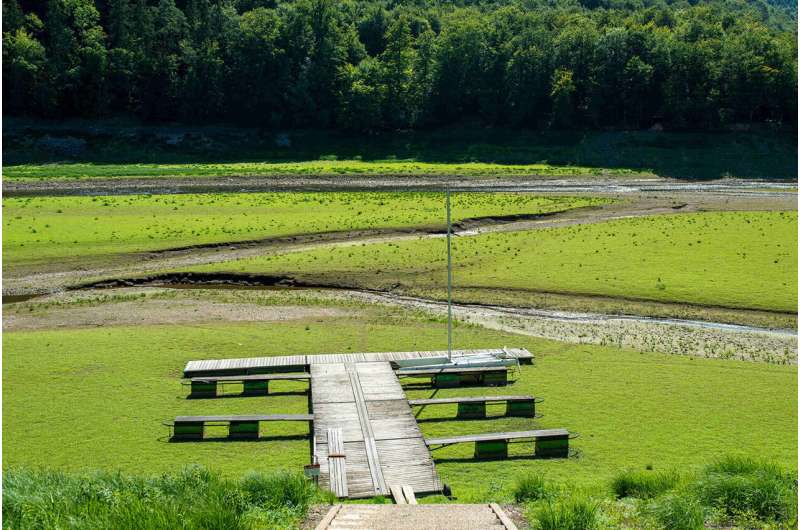Carbon emissions from dams considerably underestimated so far

Among other things, dams serve as reservoirs for drinking water, agricultural irrigation, or the operation of hydropower plants. Until now, it had been assumed that dams act as net carbon stores. Researchers from the Helmholtz Centre of Environmental Research (UFZ) together with Spanish scientists from the Catalan Institute for Water Research (ICRA) in Girona and the University of Barcelona showed that dams release twice as much carbon as they store. The study has been published in Nature Geosciences.
Streams transport large amounts of carbon-containing material, including leaves, branches and algae. If the water is dammed, the material gradually settles and accumulates at the bottom of the body of water. "Because of the lack of oxygen, the degradation processes are much slower down there. As a result, less carbon dioxide is released. The carbon contained is stored in the sediment of the dam for a longer time," explains Dr. Matthias Koschorreck, a biologist in the Department of Lake Research at the UFZ. "It had been assumed that dams store about the same amount of carbon than they release as greenhouse gases."
However, for the carbon balance of bodies of water, not only the zones covered by water, but also those that temporarily dry out because of a drop in the water level, play a role. Koschorreck's working group had demonstrated this in previous studies. If the carbon-containing material previously covered by water comes into contact with atmospheric oxygen, degradation processes and thus the formation of carbon dioxide are strongly driven. "Areas of water that are drying out thus release considerably more carbon than areas covered by water," says Philipp Keller, a former Ph.D. student in the Department of Lake Research at the UFZ. "If large amounts of water are released by a dam, large areas are suddenly exposed. But these areas had not been considered when calculating the carbon balance. This is the knowledge gap that we close with our work."
For their investigations, the researchers used a database based on satellite imagery. This contains monthly data on the size of water surface areas from around 6,800 dams worldwide between 1985 and 2015. For these 30 years, the scientists were thus able to determine exactly when, where, and for how long the dams were not completely filled and how large the dry areas were. On average, 15% of the total reservoir surface was not covered by water. The scientists used this figure to further calculate the carbon release from these areas. "Our calculations show that carbon emissions from dams had been significantly underestimated. On a global average, they release twice as much carbon as they store," says Koschorreck. "Their image as a net carbon store in the global carbon cycle must be reconsidered."
The data also show that the magnitude of water level fluctuations of dams depends on both their use and their geographic location. "Fluctuations were more pronounced in dams used for irrigation than in those used for hydropower generation," say Keller. "And in places where the annual precipitation pattern is more uniform—such as near the poles and around the equator—there were fewer large fluctuations in water levels than in the intermediate latitudes, where larger areas of the dams were often dry for much longer periods."
Using the example of dams, the research team demonstrates the influence of areas that are drying out on the global carbon balance of bodies of water. "We hope that our study raises the awareness that areas that are drying out must also be considered when balancing carbon fluxes of natural inland waters," says Koschorreck. The new findings could also be incorporated into a more climate-friendly management of dams. If, for example, the water has to be drained for maintenance, it makes sense to consider the best timing with respect to carbon release. If the work is done in the cold season instead of the summer, the degradation processes of the exposed carbon-containing material are much slower, and the carbon emission is much lower.
In order to better understand the carbon balance of dams, Koschorreck's research team plans to take a closer look at the release of both carbon dioxide and methane as well as the role of vegetation on the carbon cycle of areas that have become dry.
More information: Global carbon budget of reservoirs is overturned by the quantification of drawdown areas, Nature Geosciences (2021). DOI: 10.1038/s41561-021-00734-z
Journal information: Nature Geoscience
Provided by Helmholtz Association of German Research Centres




















